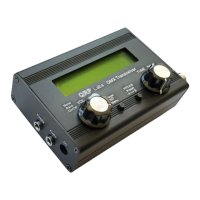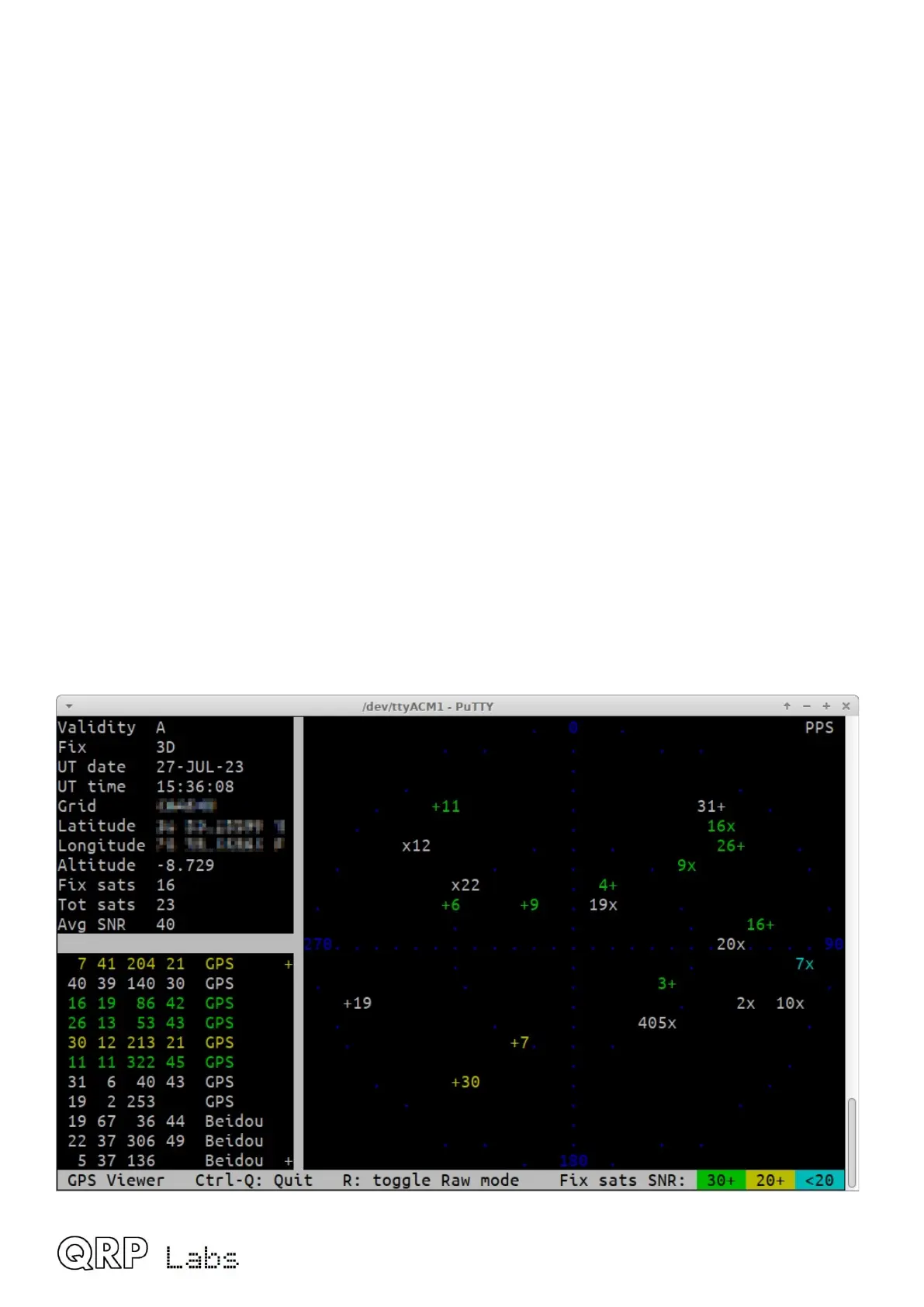will display this diagnostics screen. You may be able to see from the displayed values (and
colouring) where the fault lies.
8.6.6 GPS viewer
The GPS viewer is a very cool way to display the information parsed from a connected GPS such
as the QRP labs QLG2. It may not be particularly critically useful but it may be interesting to you!
To make use of this application you will need to have plugged a QLG2 (or similar) GPS module
into the paddle port, with 1pps and 9600 baud serial data.
The tip of the 3.5mm jack plug is 1pps and the ring connection is 9600-baud serial data. This is
also the default output of either the QLG1, QLG2SE or QLG2 QRP Labs modules, including the
current QLG2 http://qrp-labs.com/qlg2 which is an option when you order QMX.
The older QRP Labs module QLG1 receives only GPS satellites; the current QLG2 (and former
GLG2SE) modules receive 2 satellite networks, which by default are GPS (American) and Beidou
(Chinese); they are also capable if commanded, of changing to Glonass (Russian) or Galileo
(European).
An example display is shown above. There are three panels: top left, some parsed information
from the GPS data; bottom left: a list of all the satellites being tracked. There are five columns of
numbers which are:
• Satellite ID
• Elevation angle
• Azimuth angle
• SNR
• Satellite constellation
QMX operang manual; rmware 1_00_012 74

